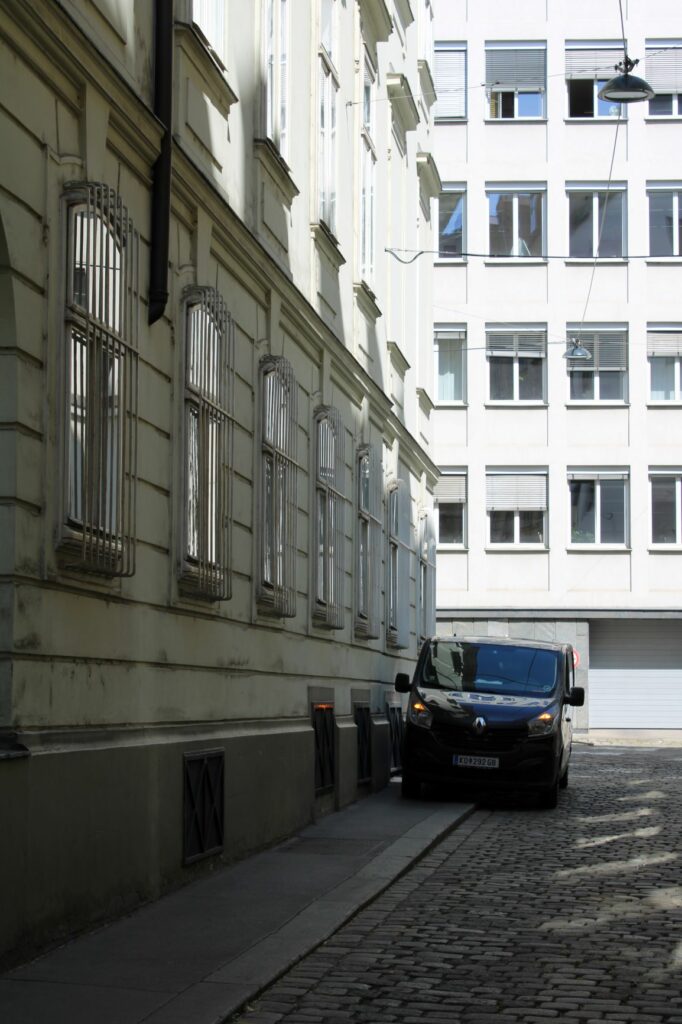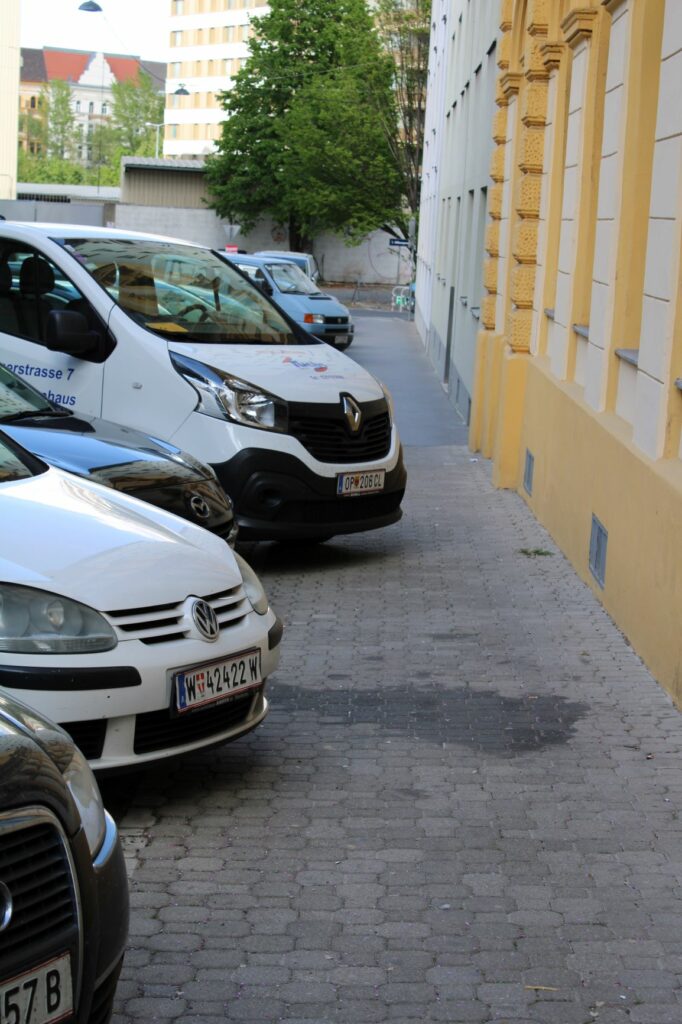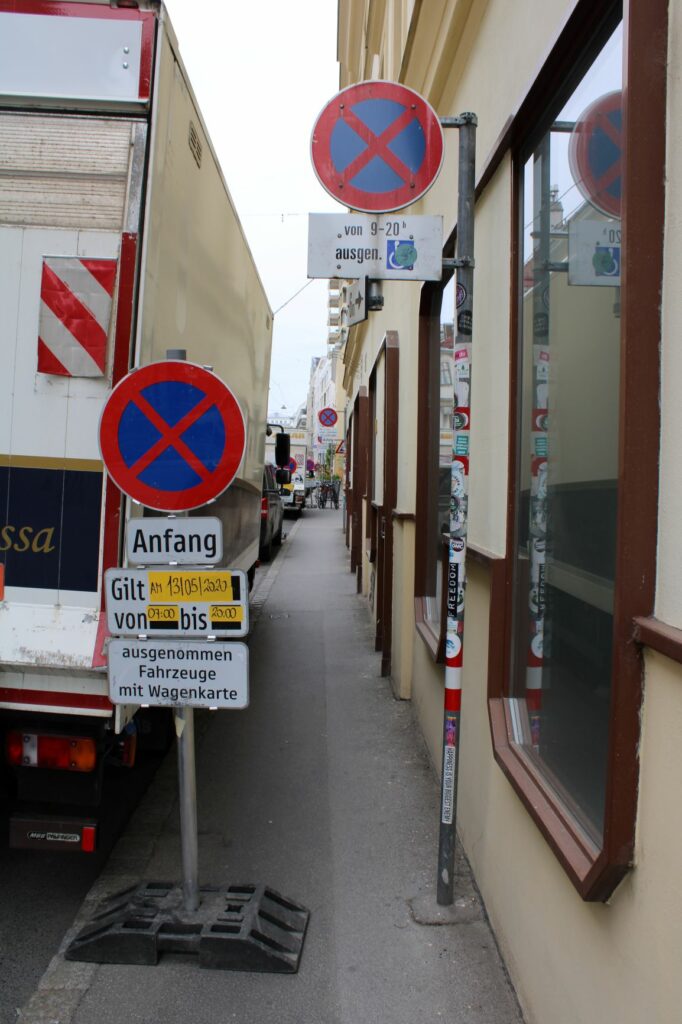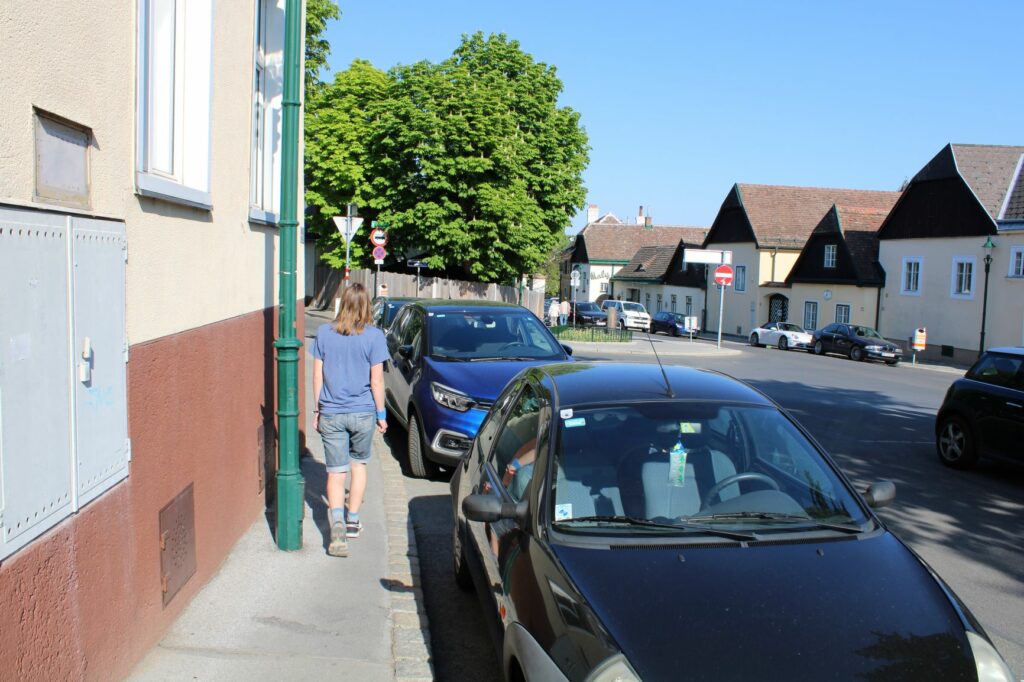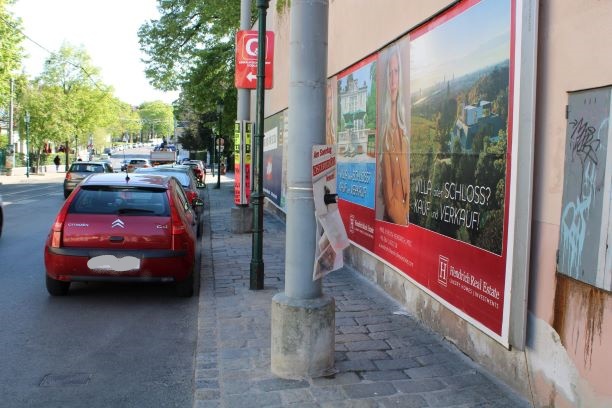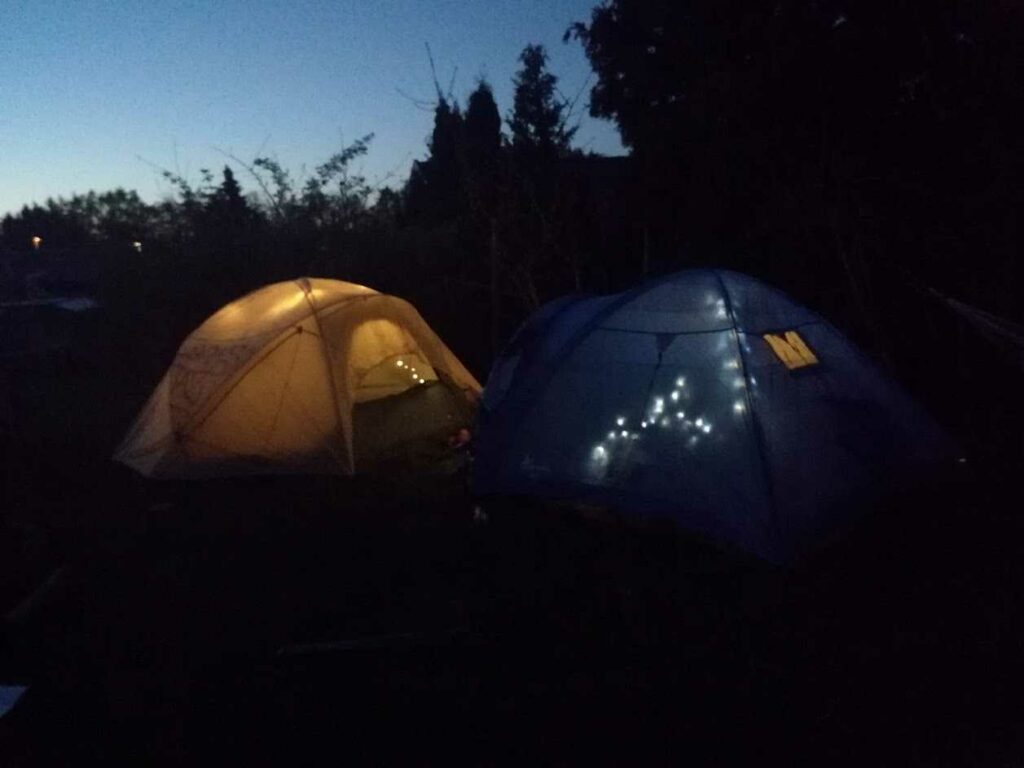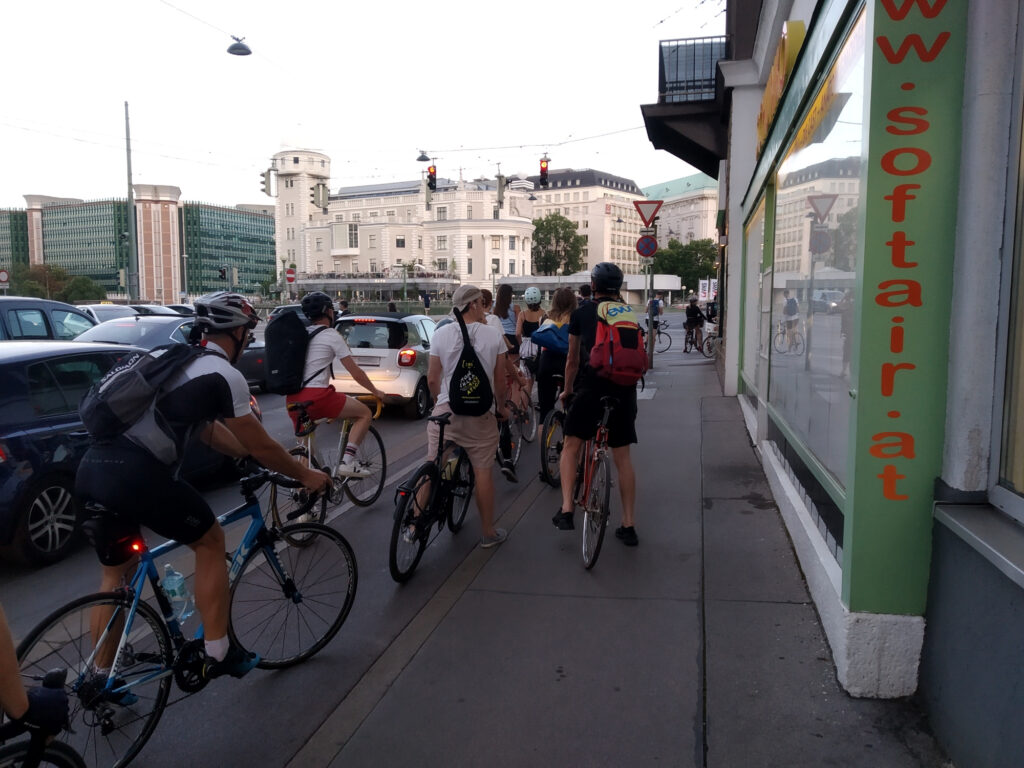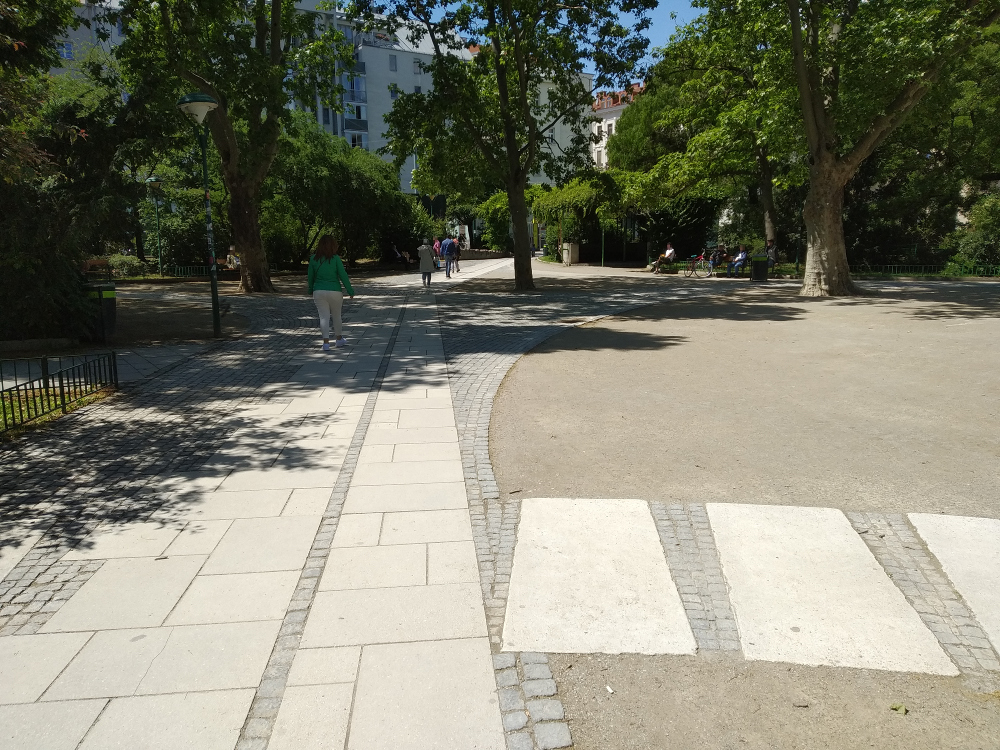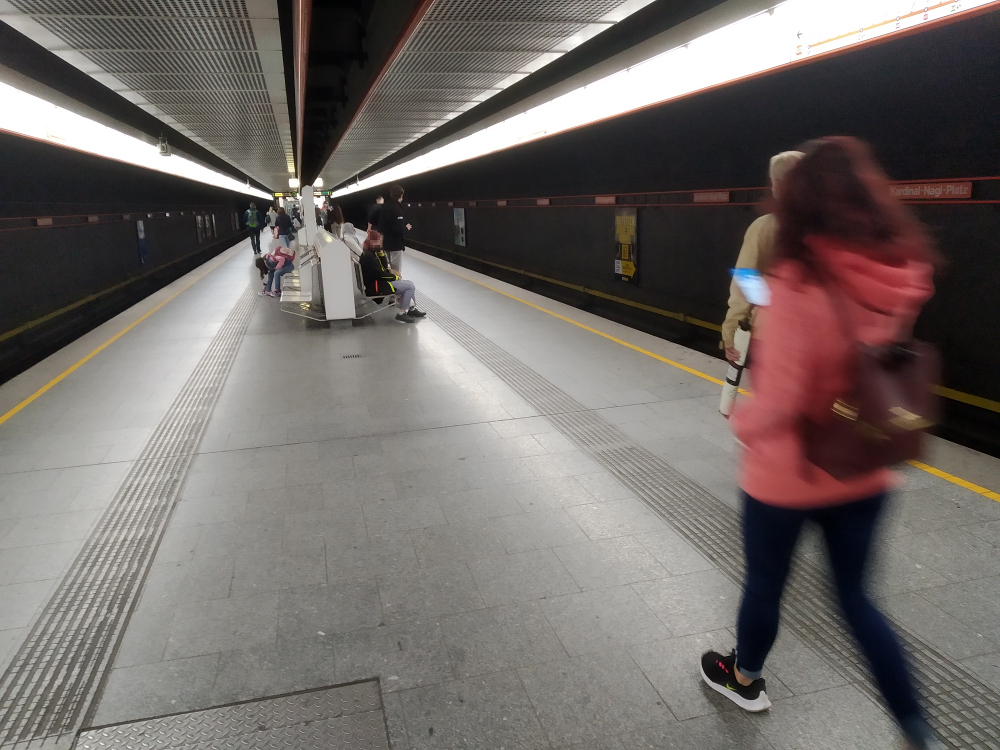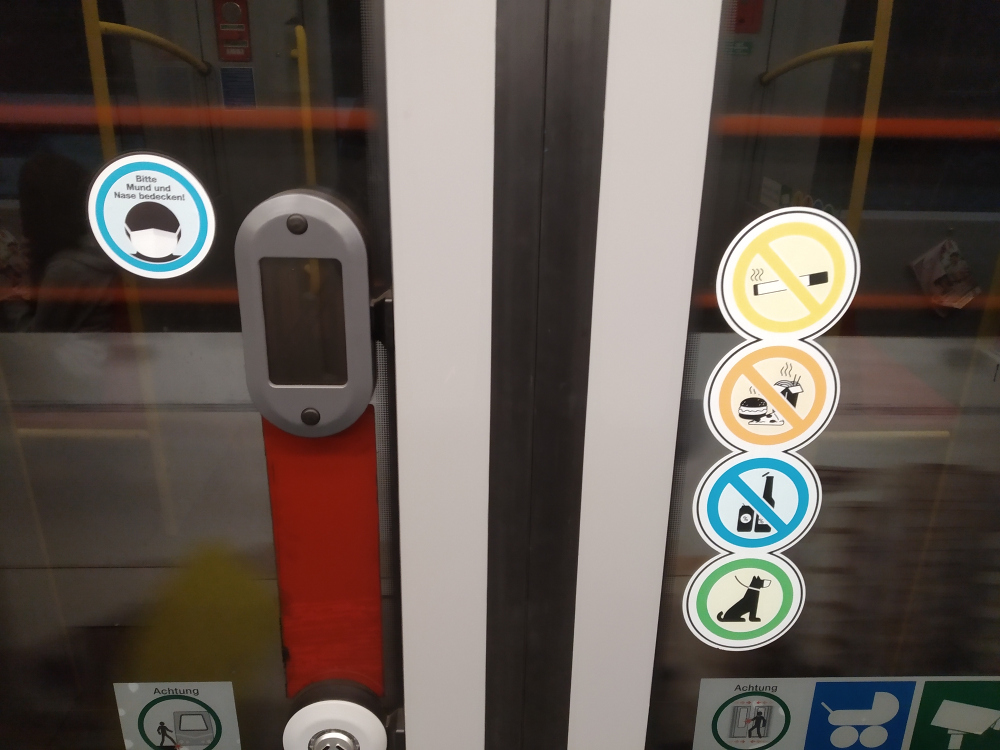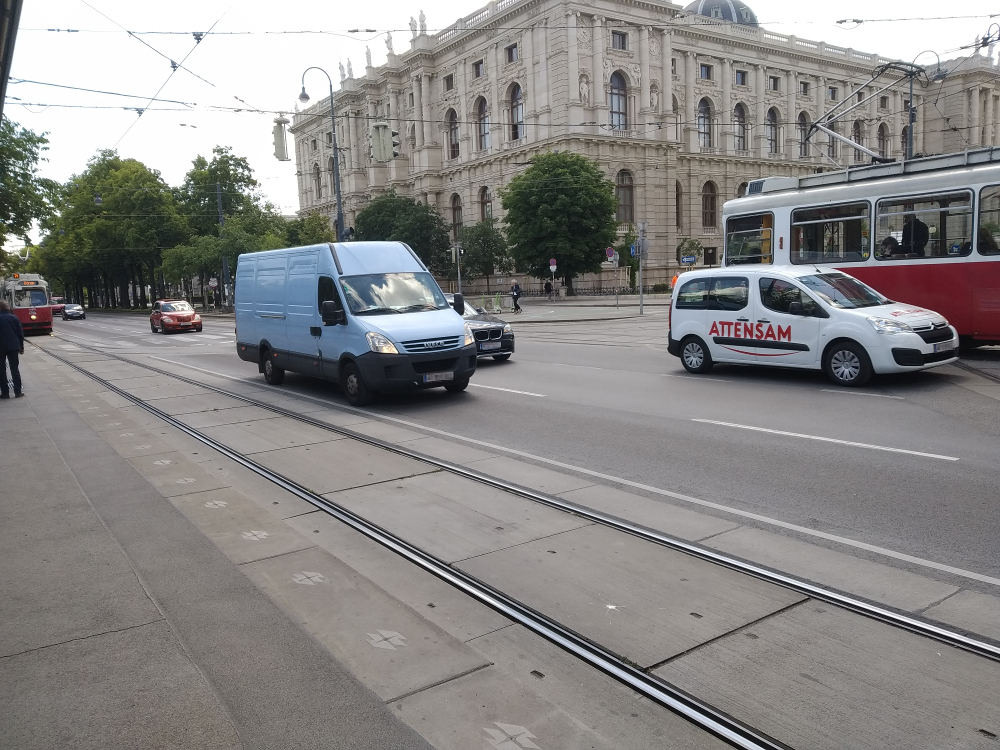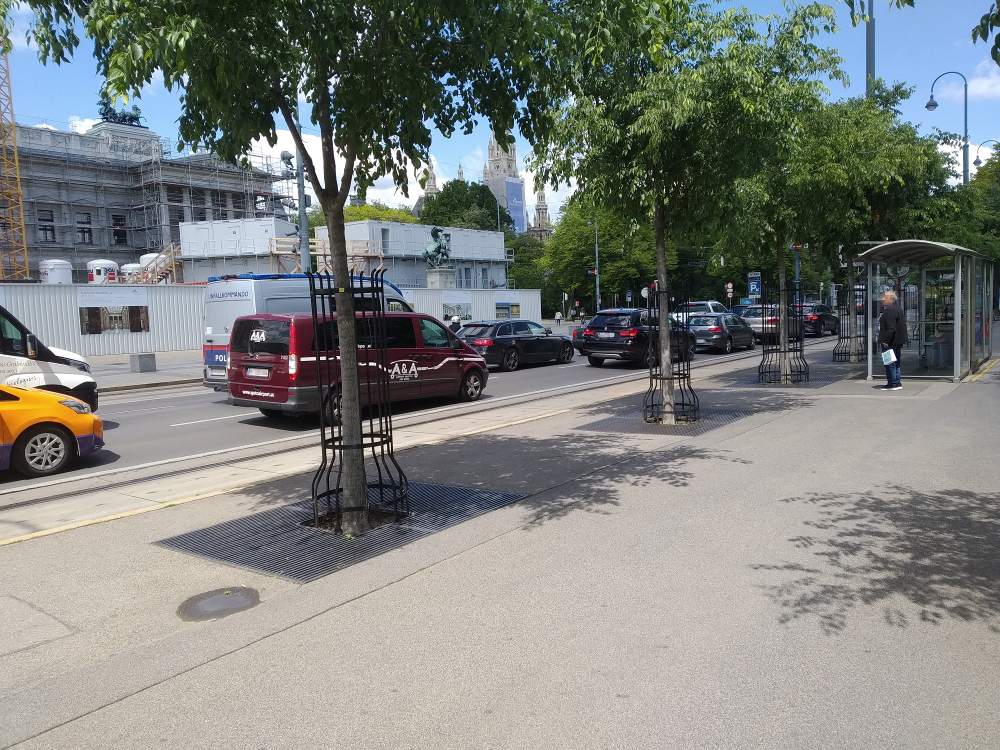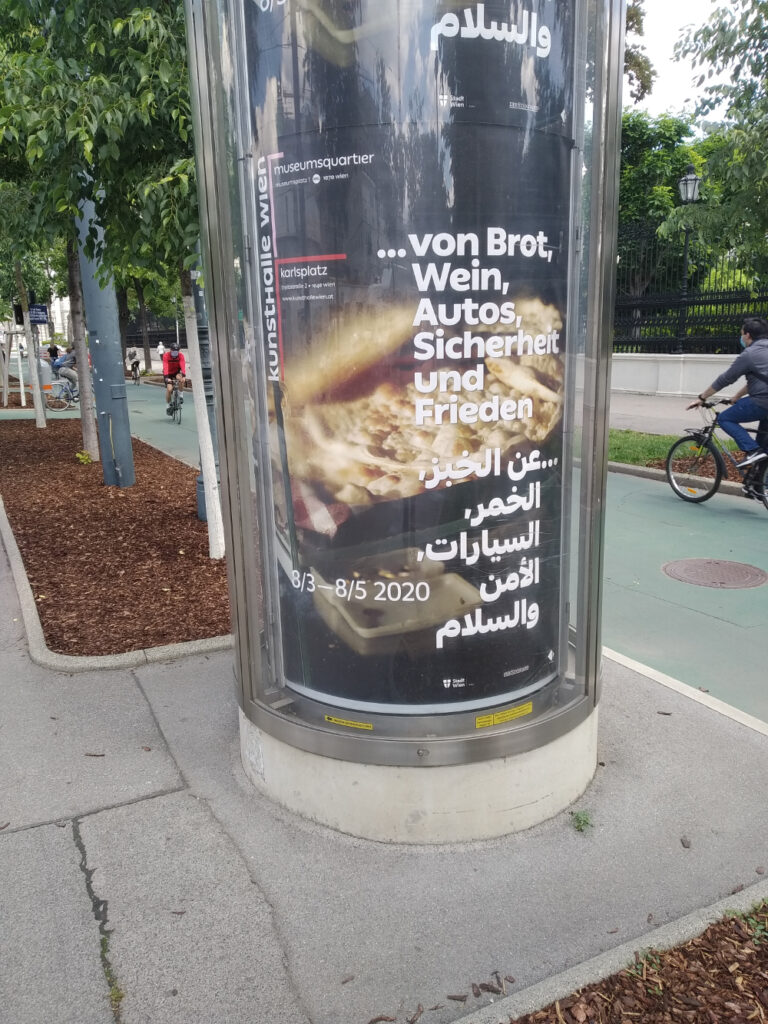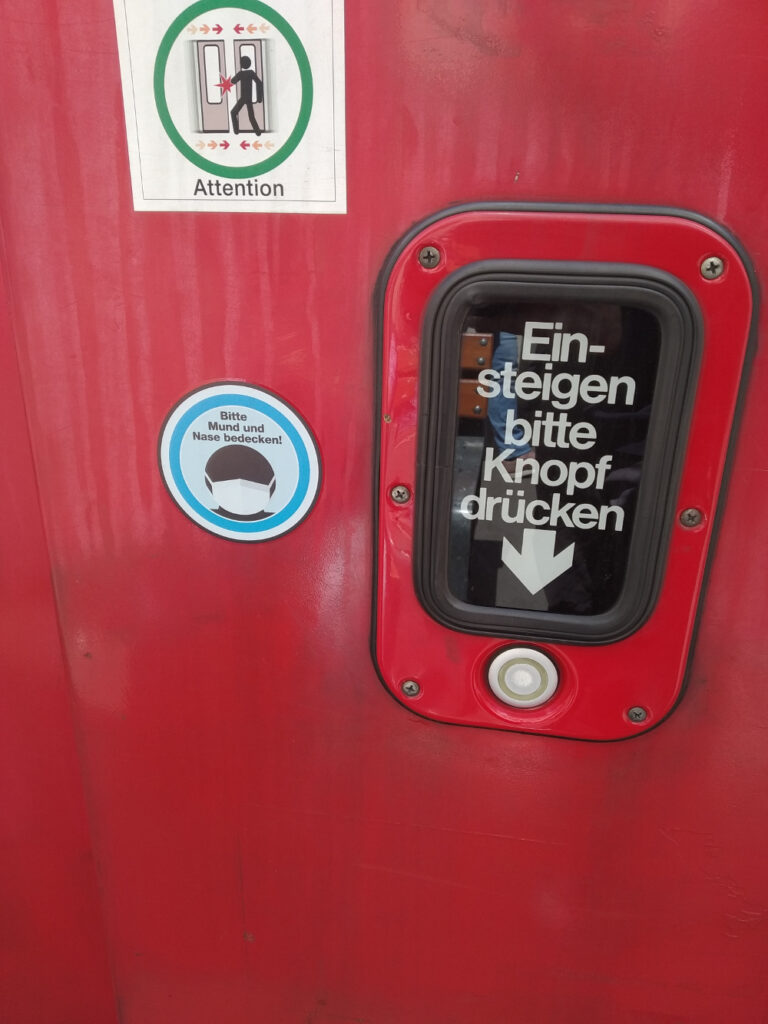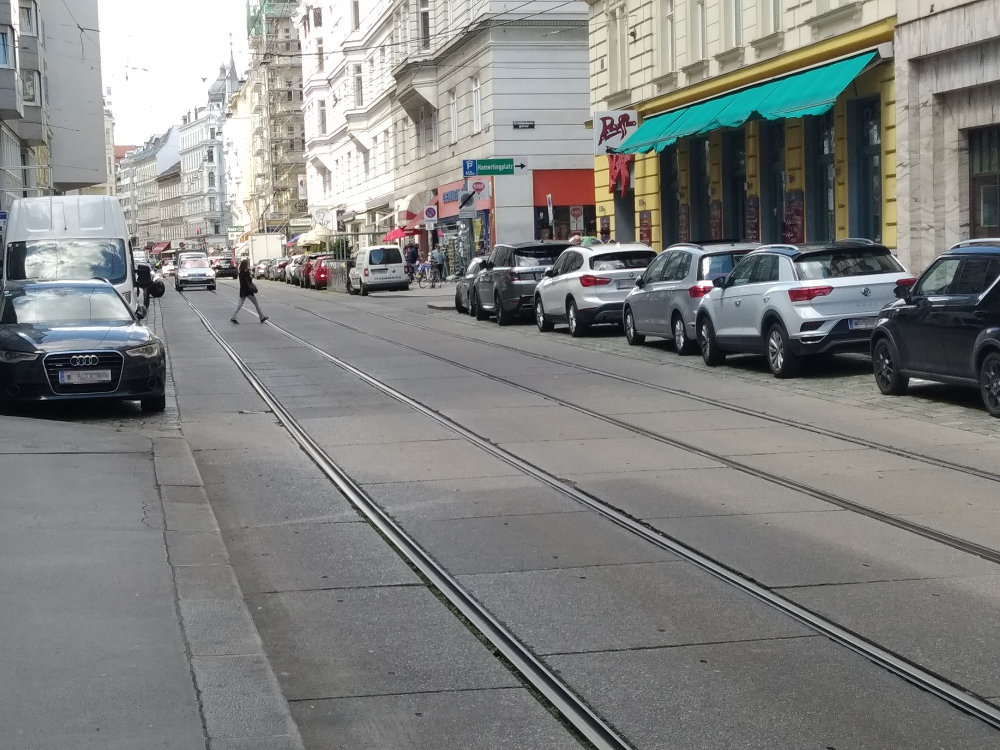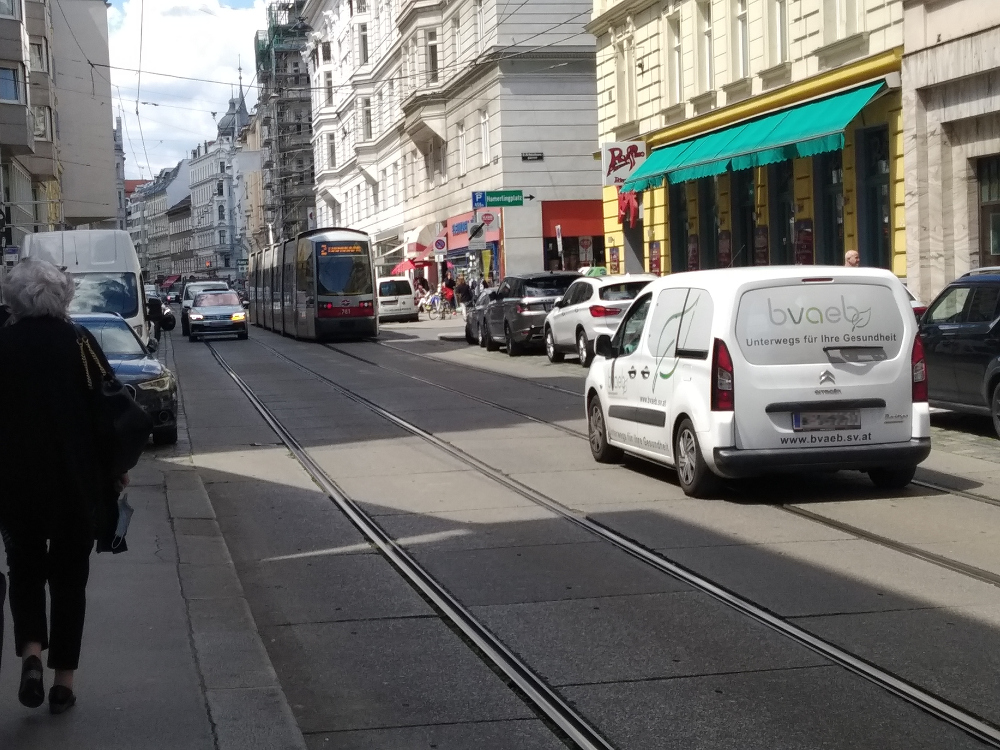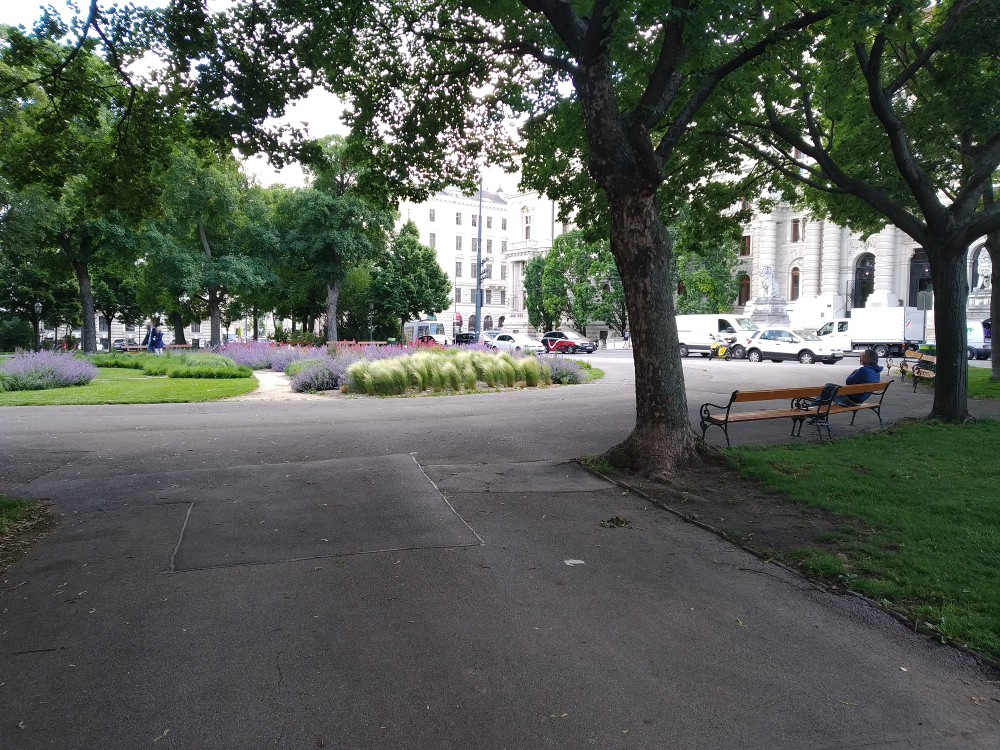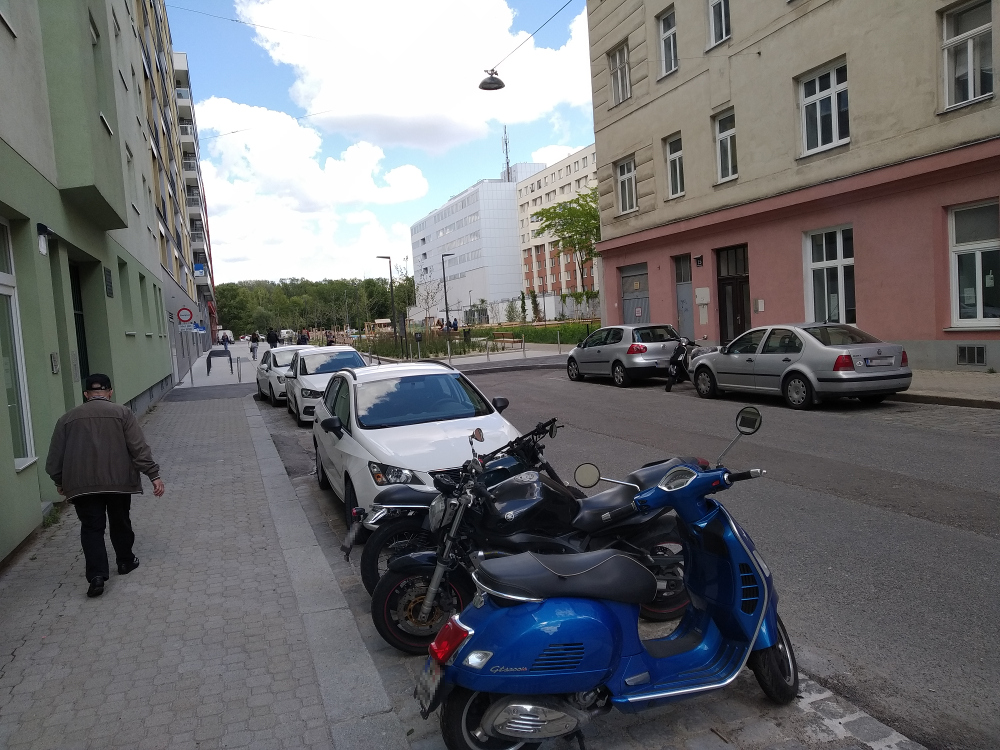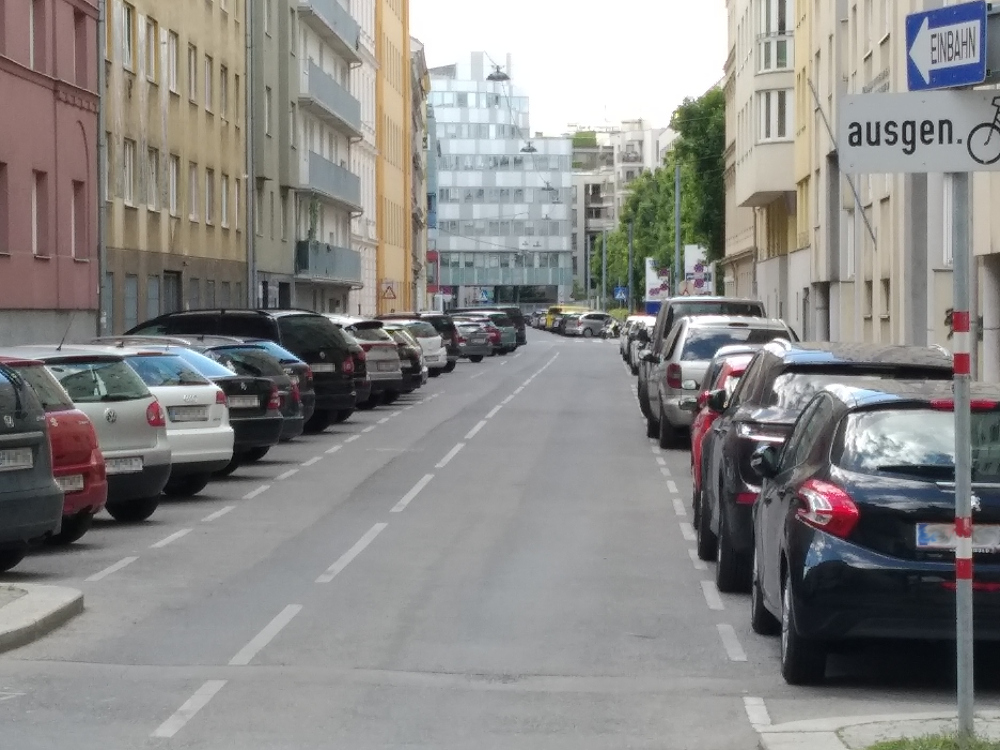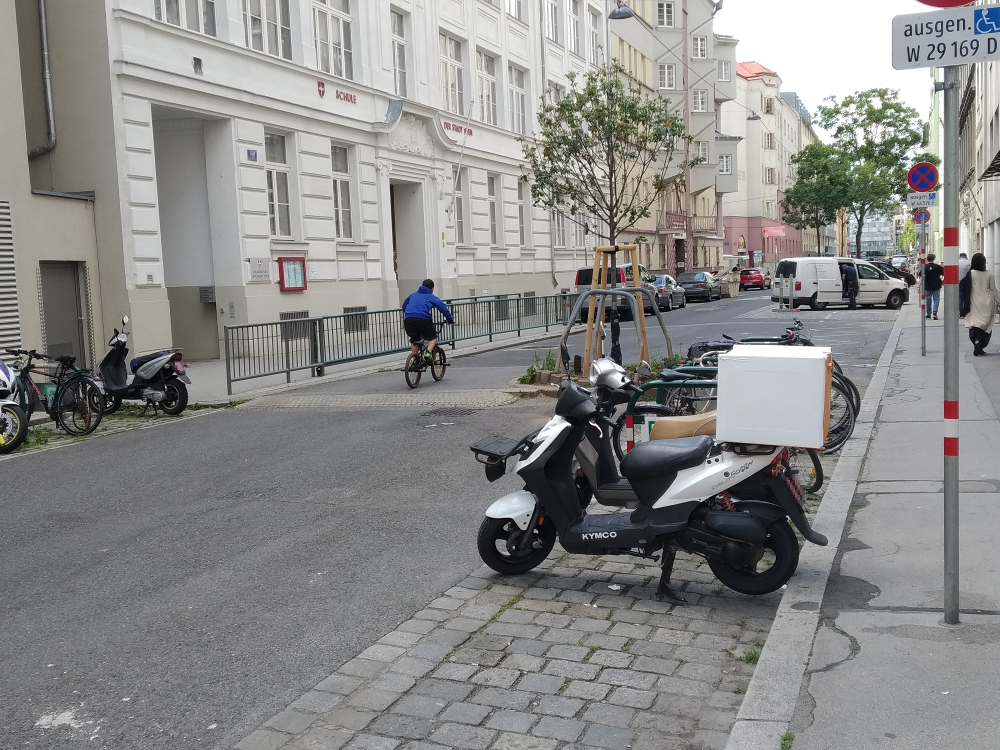-By Robert Braun, Institute for Advanced Studies, Vienna
The European Union and Austria fell in love in tandem with the electrification and automatization of automobility. This is no surprise.
Among others, the European Roundtable of Industrialists (ERT), a lobby group of the biggest European companies, CEOs of mostly automobility related companies have met with European Union Commissioners more than 400 hundred times within one year. This means more than two meetings between CEOs and Commissioners each day. Public funds are now poured into electrification: installing new infrastructure, offering subsidies, and building more roads. Automatically slowing down vehicles to meet speed limits in specific areas that would reduce automobility death and injury, as shown in tons of research papers, is less top on the agenda. After a decade long struggle, the European Commission accepted automatic speed control, the Intelligent Speed Assistance, as mandatory for all cars sold after 2024, but only to be switched-on on a voluntary basis.
The argument that automobility’s benefits outweigh their harms has a long history. Every year approximately 1.3 million people are killed on the road. In the age of automobility, more than 80 million people were killed; this is more than the casualties of all wars combined in the same period. Between 20 and 50 million more people suffer non-fatal injuries. Automobility death and injuries cause considerable economic loss to individuals, their families, and to nations as a whole. Human related cost of automobility violence reaches 3% of gross domestic product in most countries. More than 90% of road traffic deaths occur in low- and middle-income countries. Even within high-income countries, people from lower socioeconomic backgrounds are more likely to be involved. Road injuries are the leading cause of death for children and young adults aged 5-29 years. It is a century long pandemic on wheels.
Negative impacts are often compared to benefits such as freedom, jobs and profit. When industrialists speak of their mission as “driving sustainable growth and prosperity in Europe” their drive (pun intended) is to sustain automobility in the first place. Promises of electric and autonomous automobility fail to deliver even on their own terms. Electric cars, cradle to grave, cause more harm than traditionally propelled vehicles. They push problems elsewhere: to the mines of Africa, to landfills of battery deposition, to places where fossil fuel cars end up in later stages of their life when their users have been nudged into shifting to electric. Electrification of automobility offers the illusion of less environmental harm, but all else can remain the same.
Driverless cars are a similar promise. Autonomous mobility requires interoperable and seamless data flow, something the European Union is busy creating, called urban dataspace. This hands over decisions to algorithms and black-boxed technologies even their makers think are inscrutable and wrought with socio-political biases. Driverless mobility offers the illusion that people will be out of harm’s way but all else can remain the same.
Automobility as we know it cannot be sustained. The biggest problem with automobility is its often-occluded violence. Automobility is not about cars but about inhumane speed, the illusion of power, and appropriation of publicly accessible space. Violence, the harm done to human and non-human lives, is a devastating consequence.
There are many people and institutions that suggest this is fixable. Just change the propellant, substitute the driver, create better infrastructure, or bring a new safety technology. However, these fixes amount to more of the same. What needs to be done instead is a change in focus. Post-automobility is not about getting from A to B faster or slower, or causing more or less pollution, injuries or death. It is about bringing an end to the pandemic on wheels.
Automobility is a health and climate hazard. Public policy is perfectly equipped to deal with such hazards. Just think of tobacco. The tobacco epidemic is one of the biggest public health threats the world has ever faced, killing more than 8 million people a year. The economic costs of tobacco use are substantial and include significant health care costs for treating the diseases as well as the lost human capital that results from tobacco-attributable morbidity and mortality.
Tobacco industry has for decades argued that smoking is not lethal, and tried to sell a dream of freedom, power and jobs. When this did not work, they used science to fund research that showed that nothing is settled and there is enough uncertainty in our knowledge about causes to warrant doing more of the same. Until it changed. Through various measures considerable reduction of tobacco use and consequent deaths was made possible – at least in Europe and North America.
Automobility should be addressed as a health hazard and addressed as the tobacco epidemic: control, warn and ban. The public policy discourse should shift from mobility to health – this legitimates policy control of access and use. Warning signs should be made visible on cars, on roads, in cities and highways. Public memorials should be erected to commemorate road deaths. Advertising, points of sale, use should be limited and controlled; in certain places use and purchase should be banned, as in the case of tobacco. Basically, all measures applied to control the tobacco epidemic are applicable to the pandemic on wheels.
Arguments against such a shift are many. “It is a rant against cars, drivers, free men who just enjoy driving. It is detrimental to efficiency, to growth and jobs.” Whoever takes these claims up should know, s/he is denying a pandemic and the effective control of death and injury, including friends and family. Because everyone knows someone who knows someone who has died or has been injured on the road. Doing anything less equals to what the pandemic denials have achieved. Blocking public policy to save lives when a pandemic strikes. The pandemic on wheels has been with us for a century and all what has been offered is doing more of the same.
Edited German translation published in Der Standard, 5 July: https://www.derstandard.at/story/2000137153247/automobilitaet-die-pandemie-auf-raedern
Source: https://www.ihs.ac.at/publications-hub/blog/pandemic-on-wheels/
